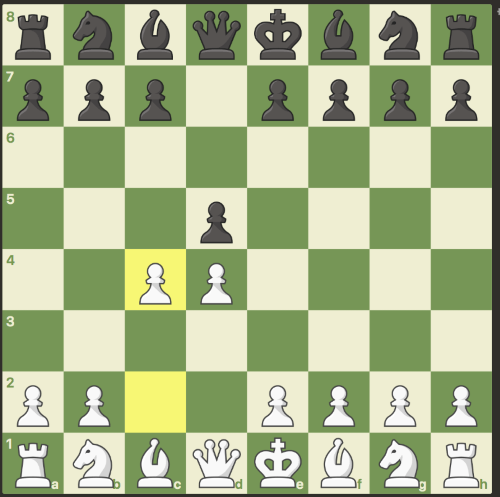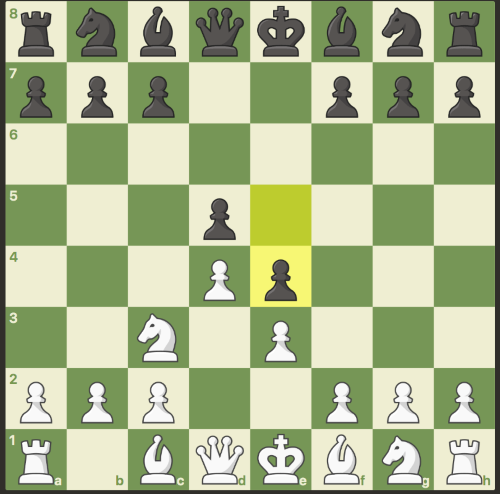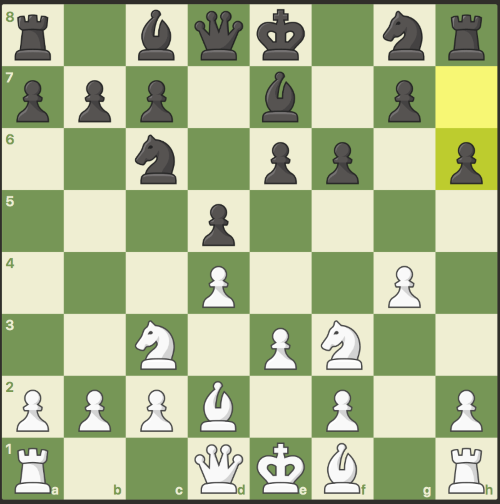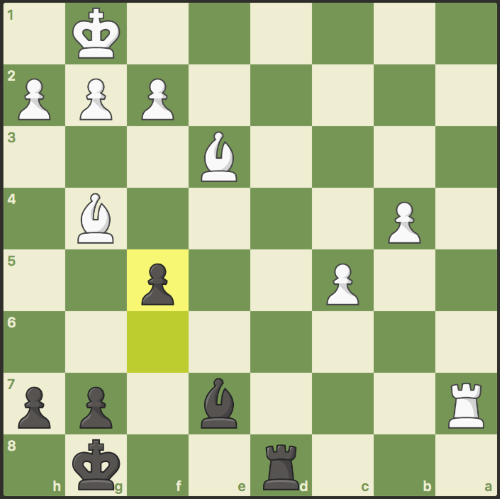How to Not Completely Suck at Chess: An Almost-Beginner’s Guide
Photos Courtesy of Netflix
Blame The Queen’s Gambit. The show was so riveting, and made chess look so cool, that I couldn’t resist making an account on chess.com and cautiously dipping a toe into the world’s most intimidating game. Since that moment, chess has now occupied basically every free minute available to me for the past two weeks. Spoiler: Online chess? Not as sexy as TV chess. The most compelling human drama so far was someone using the chat function to say “F*** USA!” to me, with various weird parentheses in order to get it past the censors.
I’m more or less a beginner at the game, but not a “damn, this dude knows nothing” beginner. I understand how the pieces move, and there was a period in my life, almost 20 years ago, where I played the odd game with friends. I enjoyed trying to out-plot the other player, but I had no concept of openings or overall strategy, which means that when I played someone who did, they clobbered me. So I did what any college student does when faced with a minor obstacle: I quit.
Now? I’m very, very in on the whole idea of chess. Being older has a way of making you look around for hobbies that you can pursue for a lifetime, where you’ll improve as much as you’re willing to learn, but that you will never, ever master. Chess fits the bill. It really is a beautiful game, perfectly devised to reward creativity and to pit aggression against defense. It’s so endlessly complex that computers haven’t solved it, and even geniuses like world champion Magnus Carlsen make blunders. It’s the kind of invention that makes you wonder about its creators; who decided that the knight would move in an L-shape? Why are all the pieces named after people except the rook? What makes the queen so angry? She seems very angry to me.
It’s fascinating. It’s also very hard, especially for a beginner. What I’m about to write doesn’t substitute for actual instruction, because I am in no way, shape, or form qualified to teach anybody anything. I probably shouldn’t even be writing this post, and I imagine that if it ever gets to a real chess community, they will mock me ruthlessly. HOWEVER. I have navigated my way around obsessively for two weeks now—that’s right, two whole weeks, the exact amount of time Malcolm Gladwell says you need to become an expert—and I believe I can offer some basic tips to other almost-beginners who want to elevate their games to “better-than-miserable” status, but only have enough interest to read one web article. Is there a market for that? Let’s pretend the answer is yes!
So: Chess.com assigns you a rating when you join the site, and I promptly dropped about 200 points in that rating system by losing again and again. However, I made it a priority to actually learn while I was losing—they have a terrific analysis program that you can try free for seven days—and since the early doldrums, I’ve gained those points back plus a few more, and am on the upswing.
Tip 1: Survive the Early Onslaught
At the start of my latest chess adventure, I came into each game excited to match wits and devise winning strategies, sat there stumped by an opponent’s early move, moved the wrong piece, and then watched helplessly as his queen or bishop absolutely ravaged some part of my line. It was over before it began. So, as you start out, you definitely want a system that will preserve your pieces early, and set you up to win later. Let me be even more specific: if possible, make your board look like white or black here:

Knights in position to fight, queen pawn up, king pawn in support. That’s the basic framework. If you’re playing as black, your opponent will often lead with the king’s pawn, in which case simply reverse the pawn structure from what you see above.
Do not move the pawn above the bishop! I cannot stress this enough. I still do it by accident every ten games or so, and while I’m sure some experts out there can weave magic from it, I always end up watching helplessly as the enemy marauders destroy everything I love. Just stick with the formation you see above, and you’ll have a solid foundation for the rest of the game.
Tip 2: Just Take the Pawn
Now, obviously, the opponent will not always let you set up so nicely. Sometimes, if you’re white and make your standard pawn move, they’ll do something annoying like this:

Or, if you’re black, white will try out something like this:

(This, by the way, is the “queen’s gambit” which gives the show its name.)
In these cases, until you know more, just take the pawn. If you try to get fancy, you’ll end up with some nightmare like this (playing as white) that will seriously hinder your movement:

Even in The Queen’s Gambit, it’s tempting to move your knight out and go pawn-for-pawn, but the computer analysis (and too much experience) shows that it puts you at an early disadvantage. Keep it simple, take the pawn, and continue building.
Tip 3: When Possible Early, Try Not to Stack Your Pawns
Here’s a move, by black, that you’ll encounter all the time at beginner-to-intermediate levels:

The idea here is that the bishop is pinning your knight, meaning that you can’t move the knight or your king will be in check, so the piece is basically stuck. It’s tempting to think, “okay, no big deal, if he takes my knight, my pawn can just take him right back.” Sometimes, though, having two pawns right on top of each other can cause problems later in the game, especially if they’re on the side you intend to castle to with the king later. In the case above, simply move your bishop up one space so that if the black bishop takes you knight, you can use the bishop to strike back. If they choose not to take the exchange, you can threaten the bishop with a pawn later and send it scurrying home.
Sometimes, you have to use your pawns, and that’s not the end of the world. Later in the game, if you have a fork opportunity (the pawn threatening two pieces at once), you’ll absolutely want to take advantage, even if it stacks the pawns. This is just a tip for the early game, and the inverse is also true: If you can make your opponent stack his pawns king-side with an even exchange, it’s not always a terrible idea.
Tip 4: Find the Vulnerable Piece, and Attack it if You Can
Take a look at this set-up, and see if you can identify which of black’s pawns is vulnerable, i.e. which one you can take without having your piece being taken in return on the next move:

All black pawns are protected by another piece here except the g7 pawn. In this case, white is in no position to attack, and black will likely castle before that piece is ever gettable, but it’s something to keep in mind for all pieces and all scenarios. In general, train yourself to find pieces that are vulnerable. It’s so easy to be primarily defensive as a beginner, but don’t forget that you have weapons too. And here in the early stages, where you might not have a grand offensive strategy, you’ll find that attacking vulnerable pieces often leads to other opportunities you never even saw.
Tip 5: Spot the Win, Even When You’re Behind
Here’s a recent game where I played pretty poorly (i.e., normally), and found myself down on material and down on time in a 10-minute game, almost certainly destined to lose. Playing white, you’ll see here that I made what looks like a very weird move with the pawn, just offering him up to black’s bishop like a pointless sacrifice:

If you want to know why I did it, here’s a hint: Look where he’s left his king. Black took the bait, took my pawn with bishop, and then I did this:

Oops! That’s game over. Before he took my pawn, his bishop was in position to take my rook when I moved it to the back line, but when he moved it off that diagonal for my little trap, I had him dead since he left his king pinned behind a wall of pawns with nowhere to move when the rook attacked.
Now, let’s get it straight, I’m not pretending that this was some genius chess maneuver. If he was paying attention instead of licking his lips, he’d have moved up a pawn, given his king room to escape, and I would have been dead. But folks, we’re playing amateur, beginner-level chess here, so even if you think you’re dead to rights, try to spot the win. This goes doubly if you’re in the lead—never stop looking for the aggressive move to trouble your opponent. Always be looking for the space where you can win, and the move to get you there.
As I said, all of this stuff is incredibly rudimentary. There’s so much to learn—an infinite amount, really—and this isn’t even deep enough to scratch the surface. It’s more like lightly dusting the surface, with a wispy feather. Still, it has helped me immediately become something better than terrible, and if you too are hoping to become casually decent, maybe this helps. Now please, don’t show this essay to any actual chess heads. I don’t need any humiliation from the experts; the game itself has plenty to give all on its own.
Shane Ryan is a writer and editor. You can find more of his writing and podcasting at Apocalypse Sports, and follow him on Twitter here .